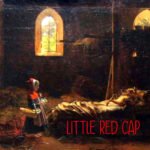Deep within the forests of Eastern Europe, ancient voices still whisper stories that have shaped cultures for centuries. Slavic and Russian fairy tales offer more than mere entertainment—they provide a portal into a world where magic intersects with profound moral truths, nature holds sacred power, and ordinary people discover extraordinary courage.
Ancient Roots, Enduring Power
These timeless narratives emerged from the oral traditions of Slavic nations spanning Russia, Poland, Ukraine, the Czech Republic, and the Balkans. For generations, storytellers gathered communities around crackling hearths during harsh winter months, weaving tales that preserved cultural memory while entertaining listeners of all ages.
Unlike their Western counterparts, Slavic fairy tales retained their raw authenticity, refusing to soften life’s harsh realities. These stories reflect the genuine struggles of rural communities while celebrating the resilience of the human spirit. They teach that wisdom often trumps wealth, that kindness opens more doors than force, and that true strength emerges from unexpected places.
The Archetypal Figures That Define Slavic Folklore

Baba Yaga: The Enigmatic Witch of the Woods
Perhaps no figure captures the complexity of Slavic storytelling like Baba Yaga, the iron-toothed witch whose hut stands on enormous chicken legs. First documented in Mikhail V. Lomonosov’s 1755 “Russian Grammar,” Baba Yaga embodies nature’s dual nature—both nurturing and destructive.
She serves as antagonist and unlikely mentor, testing heroes through seemingly impossible tasks. Her ambiguous morality reflects the Slavic understanding that wisdom often comes from unexpected sources and that growth requires confronting our deepest fears.

The Firebird: Symbol of Divine Inspiration
The magnificent firebird’s luminous feathers glow like captured sunlight, representing the eternal human quest for transcendence. These creatures appear in tales across Slavic cultures, symbolizing divine inspiration, artistic achievement, and the dangerous allure of pursuing the impossible.
The firebird’s paradox—bringing both blessing and curse to those who encounter it—mirrors life’s most significant opportunities, which always demand sacrifice and courage.

Animal Companions: Nature’s Wisdom Keepers
Slavic tales overflow with helpful animals—wise gray wolves, prophetic ravens, loyal horses, and cunning cats. These creatures serve as more than magical assistants; they represent the ancient Slavic belief in the interconnectedness of all living beings.
These animal guides teach heroes (and readers) to respect nature’s wisdom, to listen to voices beyond human understanding, and to recognize that intelligence takes many forms.
Tales That Have Captivated Generations
“Vasilisa the Beautiful”: The Power of Inner Strength
This beloved tale follows young Vasilisa, who, armed with her mother’s protective doll, must complete impossible tasks set by Baba Yaga. The story celebrates feminine resilience, the power of inherited wisdom, and the triumph of genuine goodness over superficial beauty.
“Ivan Tsarevitch and the Gray Wolf”: Brotherhood Beyond Species
Prince Ivan’s partnership with the gray wolf transcends typical fairy tale magic, creating a profound meditation on loyalty, trust, and the bonds that unite seemingly different beings for a common purpose.
“The Laughing Prince”: Healing Through Joy
Stefan, a humble farmhand, uses humor and storytelling to cure a melancholy princess, demonstrating that sometimes the most incredible magic lies in our ability to bring joy to others’ lives.
The Lasting Legacy of Slavic Storytelling
These ancient narratives continue to resonate because they address universal human experiences—loss, transformation, the search for meaning, and the courage required to face the unknown. They remind us that heroes aren’t born from privilege but forged through trials, that wisdom often wears humble clothing, and that magic exists wherever people dare to hope.
Contemporary artists, writers, and filmmakers continue drawing inspiration from these rich traditions, adapting ancient motifs for modern audiences while preserving their essential truths. From literary fiction to animated films, Slavic fairy tale elements appear wherever storytellers seek to explore more profound human mysteries.
The Eternal Magic of Ancient Wisdom
Slavic and Russian fairy tales represent humanity’s ongoing conversation with mystery, morality, and meaning. They preserve cultural memory while speaking to timeless aspects of human experience that transcend geographic and temporal boundaries.
Whether discovered through dusty library books or experienced through immersive podcast storytelling, these tales continue to offer what they’ve always provided—windows into our deepest selves and maps for navigating life’s most challenging territories.
In our increasingly complex modern world, perhaps we need these ancient voices more than ever. They remind us that courage, kindness, and wisdom remain our most powerful tools for transformation.
What aspects of Slavic fairy tales resonate most deeply with you? Have you encountered Baba Yaga, the firebird, or other Slavic folklore characters in your reading journey?
Share your thoughts and favorite Slavic fairy tale discoveries in the comments below—we’d love to hear how these ancient stories relate to your modern life!

